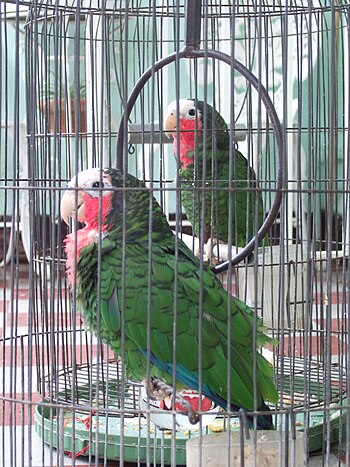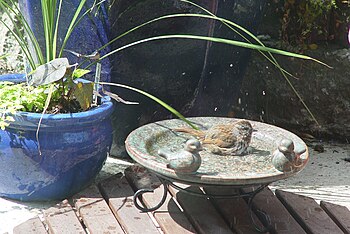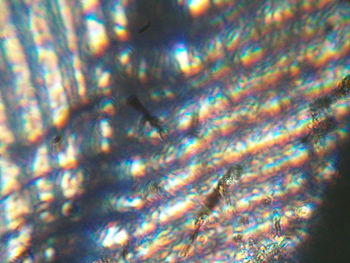 |
| English: Cuban Parrot (Amazona leucocephala) in Cuba (2007). Pet parrots. (Photo credit: Wikipedia) |
 |
| English: Mature breeding pair of Red-Bellied Parrots (Poicephalus rufiventris) on a perch in a cage. Picture taken by user:Fruitwerks at home. (Photo credit: Wikipedia) |
 |
| A pet Sun Parakeet (also known as a Sun Conure) in parrot cage. (Photo credit: Wikipedia) |
Buying a parrot and bringing it home is a much more complicated process than bringing home a dog or cat. These birds are extremely smart and sensitive. They will liven up your household and become members of your family. Having a parrot is a major commitment of time, money and acquiring knowledge.
You should thoroughly research all aspects of owning a parrot before you bring one into your
house. They will certainly give you a life time of memories. Some parrots live to be more than fifty years old
When bringing home your parrot you must remember that birds in general acquire stress related ailments fairly easily. You should time the introduction of your parrot to your home decrease the amount of stress to the bird as much as possible.
house. They will certainly give you a life time of memories. Some parrots live to be more than fifty years old
When bringing home your parrot you must remember that birds in general acquire stress related ailments fairly easily. You should time the introduction of your parrot to your home decrease the amount of stress to the bird as much as possible.
Try bringing the bird home when most of your family members are home so your parrot has a chance to meet everyone. This does not mean everyone talking to the bird at once or trying to handle the bird. It does mean every speaking in a normal voice and going about their routine while calmly acknowledging the bird’s presences.
The parrot’s cage should be put in a high traffic area where they can get a good look around their new home. Placing the cage in a corner or against a wall will give the bird an added sense of security. You should also cover part of the cage so the parrot has a sense of privacy should he or she feel overwhelmed by the new situation. It is important that the parrot’s cage be the right size from the start. A baby parrot may injure themselves in a cage that is too large. A cage that is too small will make the new parrot feel cramped and stressed.
The cage should be the permanent home for the adult birds. If you have not acquired the right supplies do not bring home the bird until you have gotten the appropriate care supplies. You do not want to stress the bird twice by introducing him to a new cage shortly after he has just gotten used to another one.
The diet is also something that your parrot should not have abruptly changed even if you feel the last owner was not feeding the bird right. Leave the bird’s diet unchanged at first and slowly mix feed over to the new diet.
Parrots are extremely social birds and must have consistent attention. You should put your parrot in a permanent place where the parrot will have an opportunity to interact with household members throughout the day. You should spend quality time interacting with the bird for at least an hour a day. Learning so basic parrot training will give you and the bird a great deal of personal satisfaction. Each parrot has a unique personality and you will influence the best aspects of the bird’s character by spending time focusing on the bird as a pet.
If you spend a great deal of time away from home , but still are determined to get a parrot you might consider two. You will avoid behavior problems in your parrot is not bored and lonely. Birds have preferences so it would be best to either get two young parrots or two older parrots that have lived together and get on well.
If you are introducing a new parrot to an old you might want to let the new parrot adjust in general to your new household first before you introduce him or her to the resident bird. You should monitor the birds’ interaction for several days before you leave the two birds together for an extended period of time.
Parrots require specific toys, foods beyond seed, and medical care. You need to read extensively on all aspects of Parrot care before making a several hundred dollars investment in a bird you can not care for. Parrots are life long companions that can grow up with your children and grandchildren. They are one of the few family pets that become living and loving family heirlooms.
Sources: http://www.plannedparrothood.com/buying.html: Advice about the buying and care of Parrots and pet birds.
e
 Bird Cages Buying Guide
Bird Cages Buying Guide Parrot Love: To Glenn Reynolds, These Intelligent Birds Are Incredible
Parrot Love: To Glenn Reynolds, These Intelligent Birds Are Incredible Pet Supplies Buying Guide
Pet Supplies Buying Guide Tips and Tricks for Surviving the Breeding Season with Parrots
Tips and Tricks for Surviving the Breeding Season with Parrots Our Bird Boutique Caters to All Your Needs
Our Bird Boutique Caters to All Your Needs








